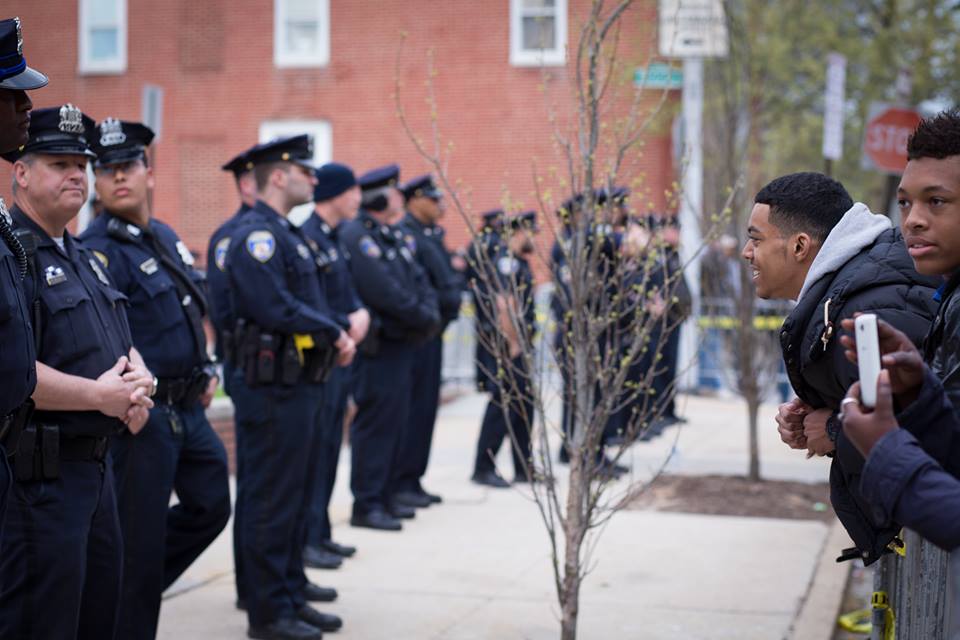Baltimore Uprising and Freddie Gray: ‘Have you ever seen anything like this?’
BALTIMORE – Ten years since the Freddie Gray riots, there’s a voice in my head that has never gone away. The voice is CNN’s Wolf Blitzer, as he gazed from a safe studio in Washington at the fire and the fury outside a pharmacy in West Baltimore.
“Have you ever seen anything like this?” Blitzer cried repeatedly. “Have you ever seen anything like this?”
Well, yes.
At the time of the Freddie Gray riots, Blitzer was 67 years old. He must have been the only one his age who never heard of 1968. So, a little perspective, please. It took this city too many years to shake loose the nightmares of the Martin Luther King post-assassination riots.
And now, we’re a full decade since Freddie Gray, the street urchin whose death while in police custody set off street riots.
And we’re still trying to deal with the memory of those days, which were only a pale imitation of the damages of 1968.

On April 10 and 11, the Reginald Lewis Museum and Coppin State University will host “Freddie: The Murder, The Uprising, The Reform” – a two-day symposium billed as “examining the impact of Freddie Gray’s death and the movement that reshaped Baltimore policing.”
How long does it take for a city to reach a peace settlement with itself?
In the Freddie Gray troubles of 2015, rioters burned about 60 buildings. Awful, of course. But, in 1968, they set more than 1,200 fires. In 2015, police arrested about 250 people. In 1968, they arrested about 6,000. The jails were so packed, they had to put 800 more defendants into the basement of the place we used to call the Civic Center, nominally the home of Earl Monroe and his Baltimore Bullets basketball team.
“Have you ever seen anything like it?” Blitzer cried a decade ago, as the cable news stations brought us the street drama.
Blitzer was watching from afar as the CVS Pharmacy on this city’s Pennsylvania Avenue was burned. This pharmacy was the heart of several days’ hysterical TV coverage.
However, in 1968, virtually every store along a four-block stretch of that same Pennsylvania Avenue was torched.
A little perspective, please.
Not only from Blitzer and all the cable TV voices whose memories went back no further than the last commercial break – but Baltimoreans, too.
It took years for this city to recuperate – physically and psychologically – from the riots of 1968. Some say we never have recovered.
And now it’s 10 years since Freddie Gray, and we’re still trying to work things out.
How long before a city comes to peace with itself? In the extended aftermath of the Freddie Gray riots, there’s a phrase echoed across every suburb surrounding the city: “I don’t go downtown anymore.”
Those are white people talking. What they mean is: the city is 60 percent Black people. We saw “those people” rioting, and it terrified us. The fear lingers – and never mind that crime in the city is down, homicides are down, and there hasn’t been a mass disturbance in the past decade.
Ask restaurant owners, ask theater owners, check out the emptiness as darkness descends around once-packed Harborplace, which now feels like some ghostly presence.
They’ve all been struggling to bring customers back ever since Freddie Gray.
When does a city begin to make peace with itself?
Baltimore police are still trying to find their footing since 2015. Accused of causing Grey’s death – but, more broadly, accused of routine abuse and insensitivity in Black neighborhoods – cops complain they’ve gotten a bad rap, and now some say they hold back from volatile situations where they’re vulnerable to allegations of abuse.
At its peak, this city’s mid-20th century population was just under one million people. Now, we’re under 600,000, after decades of white flight and middle-class Black flight. And, among those remaining, median white income is nearly double Blacks’ income. Black unemployment sometimes triples whites’. About 85 percent of those arrested and jailed each year in Baltimore are Black.
Those numbers are no secret to anyone. And they bring anger and despair in Black neighborhoods, and anxiety about “going downtown” among whites.
“Have you ever seen anything like this?” Wolf Blitzer asked a decade ago.
Yes, we have. We’ve seen the troubles dramatized along the great American racial divide for generations. We’ve seen them at their worst in 1968 and 2015.
But they linger in our hearts ever since, and leave us wondering when this city will find peace with itself.

Michael Olesker, columnist for the News American, Baltimore Sun, and Baltimore Examiner has spent a quarter of a century writing about the city he loves.He is the author of several books, including Michael Olesker’s Baltimore: If You Live Here, You’re Home, Journeys to the Heart of Baltimore, and The Colts’ Baltimore: A City and Its Love Affair in the 1950s, all published by Johns Hopkins Press.

